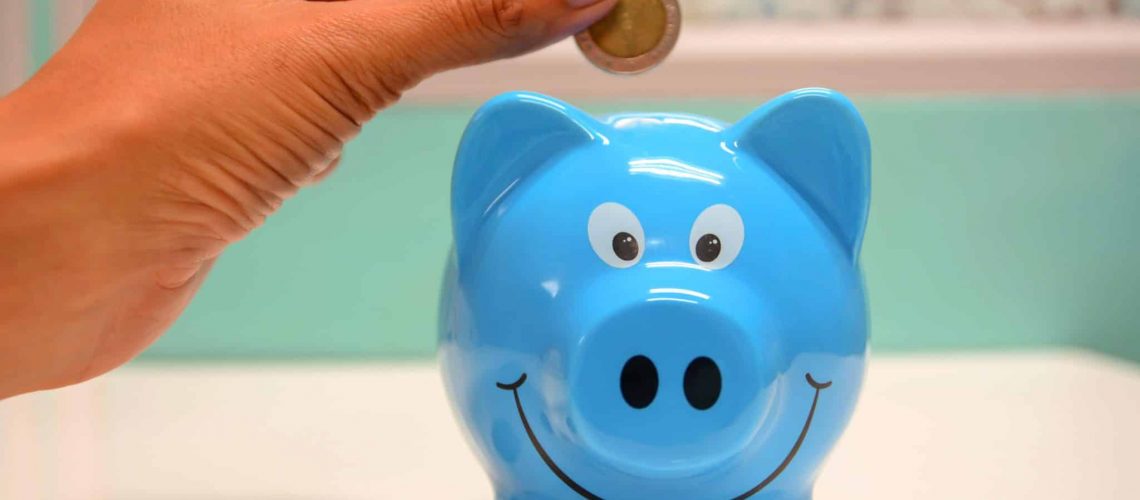What would you do with $8,000 more dollars in your savings account – every year?
This is how much money my client Amanda was able to free up by using one of the quick strategies I’m going to share with you today. 🎉
On Wednesday, in my weekly newsletter, I shared a couple stories about clients who had opposite results with their attempts to save money.
(Not in my community? Didn’t get the email with the inside scoop? Click here to become an insider; don’t miss a thing.)
🔎 Jim and Sally kept falling into a harmful pattern …
… save money, spend it all, take on more debt, pay some of it off, rinse and repeat – despite the fact that they have a high income and no kids.
🔎 Amanda, on the other hand, managed to grow her savings even though she’s a single parent of two with a modest income. 💰
She didn’t increase her income to get this result, either.
Have you ever said this to yourself: If only I earned more money, I’d have more savings?
It’s a common belief – that more money is the answer. It’s not.
If earning more money were the solution to a savings problem, then you would expect Jim and Sally, with their much higher family income, to be farther ahead than Amanda.
But they’re not.
Today, I’ll share one of the quick strategies I taught Amanda that allowed her to become much more financially secure without earning a single dollar more of income.
It’s something that you can do, too, with less than an hour’s work.
Find the hidden money leaks
I had Amanda implement one of my money-saving strategies called the Big 3 Audit.
It works like this: You create a list of every recurring expense that has a fixed cost, then you evaluate that spending using my Values Test.
Before I share the details of Amanda’s results, here’s something to consider.
When you create a breakdown of where you spend your money, the three categories that chew up the lion’s share of your income are invariably housing, transportation, and food costs.
Depending on where you live, these costs alone can use up more than 50% of your after-tax dollars. 😲
That’s a HUGE amount of your money flowing out of your life, each and every month.
And yet, these categories rarely get attention in the pursuit of higher savings.
When someone says to me, “I just can’t seem to save money”, I ask them what they’ve tried.
That’s when I typically hear about cutbacks on things like coffees or drinks out, eliminating meals at restaurants and that sort of thing.
I also hear about attempts at saving $5.00 per package of toilet paper and scouring coupon codes.
Sure, that approach will save you some dollars – I’m a big fan of benefiting from sales for items that are on my buy list – but it probably won’t move the needle for you.
Let’s say you did ALL the above; what would you save?
🧮 Two coffees per week at Fourbucks x 50 weeks (two weeks off for the Christmas break) = $400. Not bad, but you really miss that time with your BFF.
🧮 Drink at home with friends once a month instead of going out = $200 savings (ish).
🧮 Save $5/bag of toilet paper = $100 savings (in case you use a lot of toilet paper).
🧮 Savings from coupon codes = a couple hundred dollars??
Your total savings from all those activities would be less than $1,000 per year.
If, like Amanda, you earn $65,000 per year, that’s roughly a 1.5% savings rate on that effort and deprivation.
You’re in good company
If this is the approach you took, too, I get it.
We all focus on the day-to-day stuff because that’s what everyone talks about.
When I was working on paying off $400,000 of debt way back when, I started with the day-to-day things, too.
Until I realized it would take me a lifetime to pay off all that debt and build savings – hello Freedom 85🤦♀️ – unless I took a different approach.
That’s when my training as a researcher kicked in and I turned my attention to the hidden money leaks where much bigger dollars disappear.
The Big Three Audit for big wins
Instead of nickel-and-diming yourself to grow your savings, go for the big wins.
Do a Big 3 Audit to uncover the larger money leaks in your financial system.
Create a list of the following:
🏠 HOUSING
1. Your annual mortgage payment amount. If you pay your mortgage on a monthly basis, multiply that number by twelve. If you pay bi-weekly, multiply that number by twenty-six. If you pay bi-monthly, multiply that number by 24. If you rent, multiply your monthly rent by twelve.
2. The amount of house insurance you pay per year.
3. Your annual house maintenance costs.
4. Your annual property taxes.
🚗 TRANSPORTATION
1. Your annual car payments.
2. Total repairs and maintenance per year.
3. Car insurance total for the year.
4. Total gas costs for the year.
5. Parking costs per year if applicable.
🍏 FOOD
1. The amount you pay per year for groceries.
2. Amount paid for take-out for the year.
3. Total paid for meals at restaurants in a year.
It should take you less than an hour to pop in the amounts for the above – if you track your expenses.
If you don’t track your spending (we’ll chat about that next week – no shame, no blame, no judgment here), most of those values will be easy enough to look up.
For your groceries and other variable expenses, pull up your credit card statements and have a quick look. Put down your best guess for now.
Remember, this isn’t a test! It’s an exercise to help you notice something important about your finances:
You spend a lot of money on the Big 3!
Amanda’s shocking insight
Two things stood out for Amanda when she plugged in her numbers for the Big 3.
First, as a divorced mom of two, her house costs were bleeding her bank account. Something had to give, or she would go broke. 🙁
Second, the old car she was holding onto because she thought it was a frugal choice was costing her a fortune.
We ran all of these numbers through my Values Test – a concept I teach in my Your Foundation to Financial Freedom course – and we talked about possible strategies to help her strengthen her financial picture.
She owns a house in a good location. Rather than sell and move her kids – which would be yet another hard transition after the emotional roller coaster of the divorce – she decided to bring in an international student to help offset the costs of the house.
It nets more than $4,000 every year and she’s loving the experience. 💪
I also had her call a mortgage broker to renegotiate her mortgage. It was worth breaking the existing agreement and paying the penalty to secure a much better rate.
The net effect? Hundreds of dollars saved every month.
Finally, she traded in her old car for a newer car with less mileage. Even with the higher monthly cost, she is ahead on an annual basis due to reduced repairs and gas costs.
Total savings so far?
$8,000 per year. That’s a 12.3% savings rate!
That’s not including her savings around food costs.
This was a life-changing result for Amanda with just a few hours of work.
Pretty cool, yes? 😎
What would you do with $8,000 more dollars in your account every year?
✨ Would that mean a filled up Emergency Fund, giving you peace of mind?
✨ Or a Planned Expenses fund so that you don’t go into debt every time something breaks down – or you discover that your kid needs braces?
✨ Would you finally be able to crank up your investments and start building wealth?
✨ Would it allow you to crank up your savings, build investments, AND buy all the darn skinny lattes you want AND go out for wine with your besties?
You bet it would!
You do not need to deprive yourself to grow your savings and build a strong financial foundation.
Start with the Big 3 Audit technique I shared today. See what hidden money leaks you uncover.
Heads up – save the date!
On Tuesday, February 21st, I’m putting on a FREE training that will help you crank up your savings and get much better value from your spending. It’s called,
How to Stop Overspending and Consistently Grow Your Savings Instead
I’m going to share 3 Common Approaches that Don’t Work and 3 Strategies that Do – Without Leaving You Feeling Restricted and Resentful.
This is a one time only training.
You’ll get a chance to ask questions and receive direct guidance from me on making savvy choices with your dollars and eliminating patterns that harm your ability to grow your savings – like overspending.
Monday, I’ll share the registration link with my community. If you’re not on my list yet, click on this link and keep an eye on your inbox.
For right now, I encourage you to give the Big 3 Audit a try. When you’re done, I’d love to hear your results. Hop into the comments below.
Reach out if you have any questions about the technique. I’m here for you.
Chat soon, ❤️
Doris
PS If you read this and you thought, “I’m good. I don’t have a problem saving money. I don’t need to do this.” – I have one question for you: Do you want to have more money to fund the things that matter most to you? If so, give the Big 3 Audit a go. Every time I do this with my own finances, I find savings. I bet you will, too.
Want a proven process to help you make smart, savvy financial decisions that are in your highest, best interests every time?
Grab your copy of my FREE Cheat Sheet. In it, you’ll discover the four key questions to ask yourself, in order, to gain total clarity on the right financial path for you.
This process works for all decisions, big and small.
Make indecision, second-guessing, and analysis-paralysis a thing of the past.


